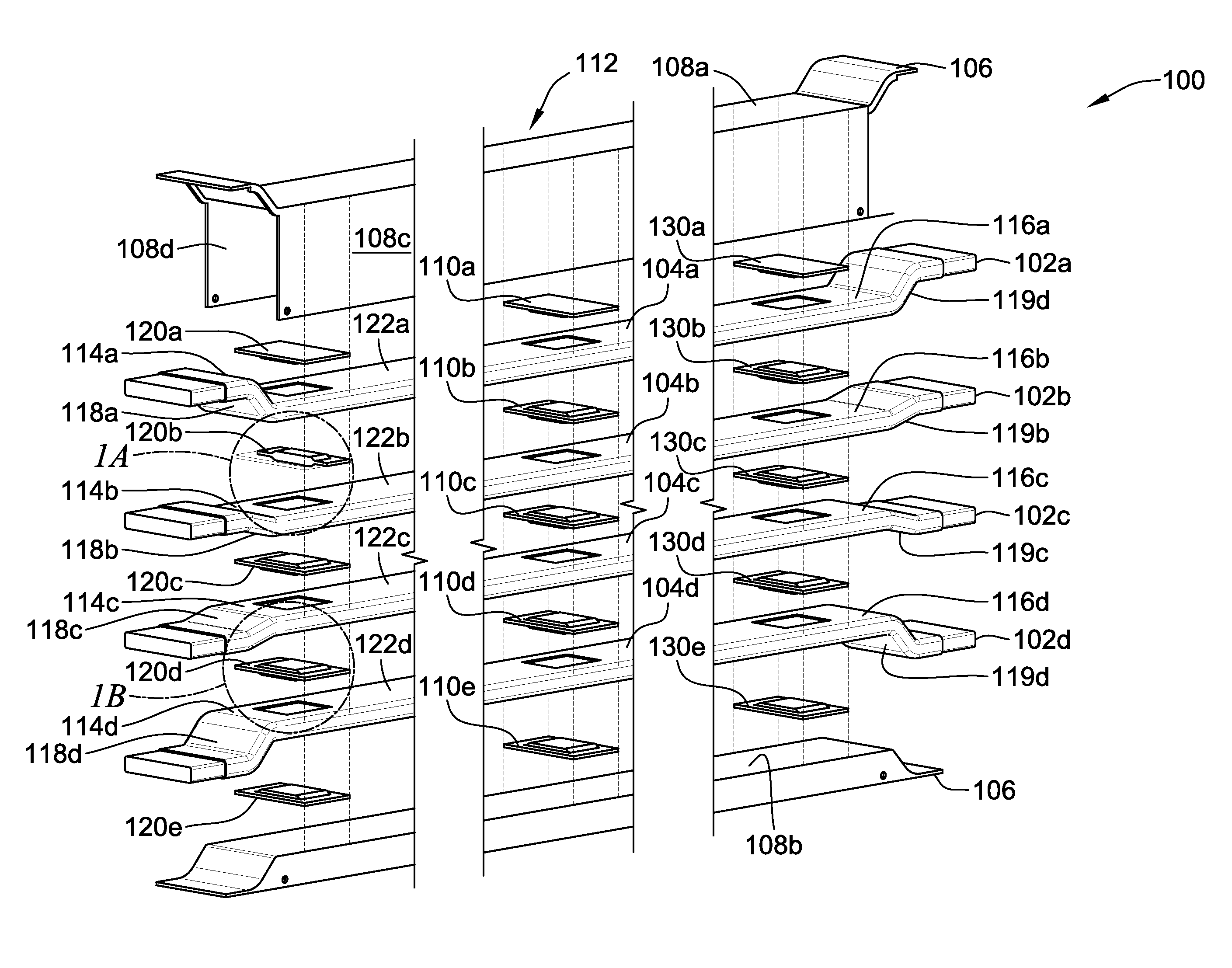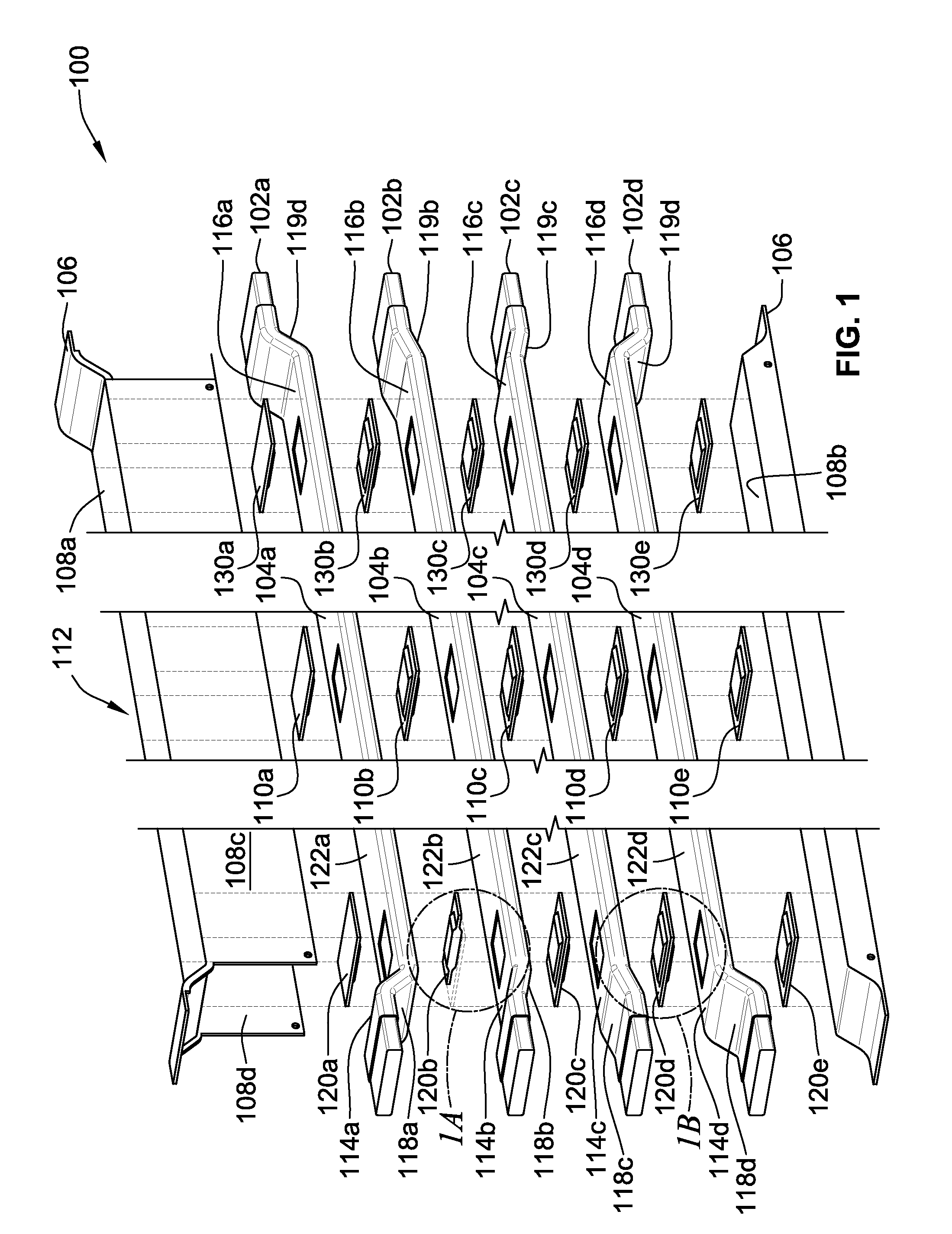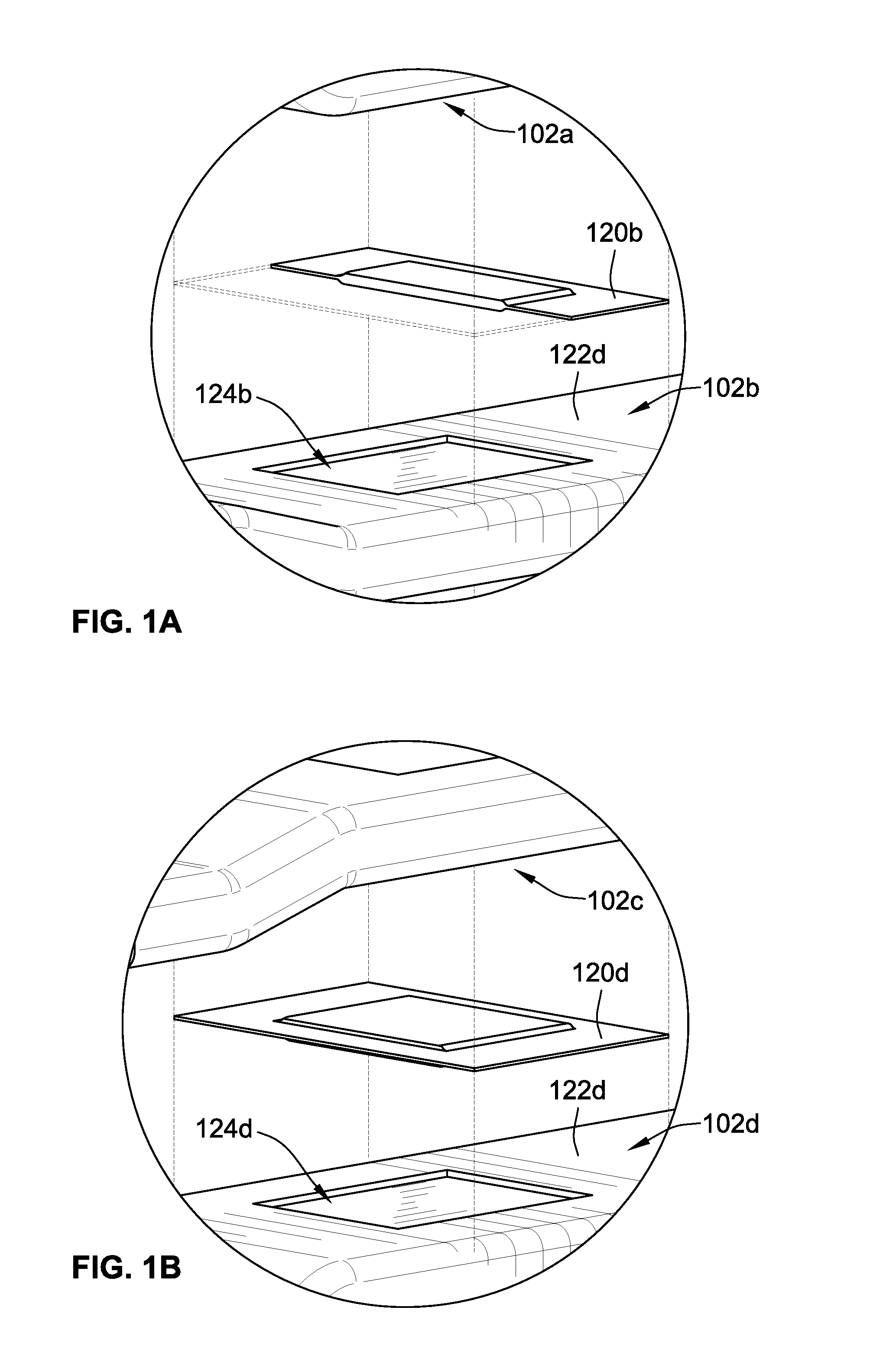Thermally efficient busway
- Summary
- Abstract
- Description
- Claims
- Application Information
AI Technical Summary
Benefits of technology
Problems solved by technology
Method used
Image
Examples
Embodiment Construction
[0022]FIG. 1 is a perspective illustration of a busway section 100 shown in exploded form for ease of illustration. The busway section 100 includes four electrically conductive busbar conductors 102a,b,c,d stacked on top of one another to form a stack 101 (see FIG. 2). Each of the busbar conductors 102a-d has an elongated straight section 104a-d, respectively, and are composed of an electrically conductive material, such as a material that includes copper. Each busbar conductor 102a-d includes an electrically insulating sheet or sleeve 122a-d that surrounds or wraps around the busbar conductors 102a-d and is present in all areas where any busbar conductors 102 is in physical contact with an adjacent busbar conductor 102.
[0023]In this illustrated example, four busbar conductors 102 are shown, with three of the conductors 102 conventionally carrying a different phase of electricity (typically labeled A, B, and C to designate that each phase of current lags the other by 120 degrees), a...
PUM
 Login to View More
Login to View More Abstract
Description
Claims
Application Information
 Login to View More
Login to View More - R&D
- Intellectual Property
- Life Sciences
- Materials
- Tech Scout
- Unparalleled Data Quality
- Higher Quality Content
- 60% Fewer Hallucinations
Browse by: Latest US Patents, China's latest patents, Technical Efficacy Thesaurus, Application Domain, Technology Topic, Popular Technical Reports.
© 2025 PatSnap. All rights reserved.Legal|Privacy policy|Modern Slavery Act Transparency Statement|Sitemap|About US| Contact US: help@patsnap.com



